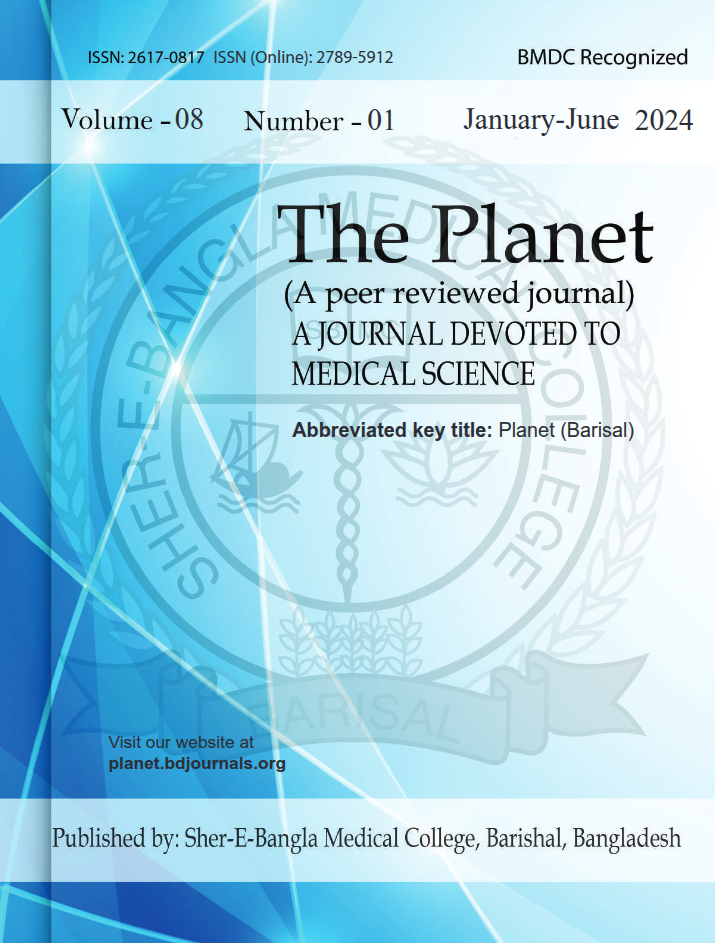Clinical and Histopathological Study on Malignant Ovarian Tumour- A Descriptive Type of Cross-Sectional Study
Published 28-12-2024
Keywords
- Histopathological,
- Malignant,
- Ovarian Tumour
Copyright (c) 2024 The Planet

This work is licensed under a Creative Commons Attribution 4.0 International License.
How to Cite
Abstract
Introduction: The clinical presentations of malignant ovarian tumours are not always specific. Therefore, most of the patient of malignant ovarian tumour seeks medical attention at the late stage of disease when no effective treatment could be given. Therefore, this study was conducted to observe clinical and histopathological findings of malignant ovarian tumour. Methods & Materials: Clinical features and peroperative findings of 70 patients of malignant ovarian tumour from DMCH who underwent operative treatment were included as sample. GIT, constitutional, gynecologic symptoms, symptoms of mass effect, mass in abdomen and pain studied were evaluated. In addition, peroperative finding evaluated and staging done. Subsequently the findings were correlated with histopathological diagnosis of the tumour. Results were expressed in percentage. Results: The age of the patients ranged from 14-75 years with a mean age 41.23 years. Eighty-two percent patients were married. Of them, 93.5 are parous. Menopausal women were most frequent constituting 56.0% of total. Constitutional and symptoms of mass effects were common in malignant ovarian tumours 54% of patients presented within six months of onset of symptoms. However, duration did not affect the histological type of ovarian tumour. Restricted mobility with solid in consistency (44%) was common on malignant tumours whereas partly solid and partly cystic consistency only in (38%) of mass found in malignant ovarian tumours. Bilateral distribution was more in malignant tumours. Haemorrhagic peritoneal fluid was present only in (22%) malignant tumours. Conclusion: From the above discussion we see that most of the patient of this study population are illiterate, from poor socio-economic condition. Flatulence and dyspepsia in postmenopausal women should be concern with and her per abdominal, pelvic examination, together with transvaginal USG and CA-125 must be done to exclude malignant ovarian tumour.



